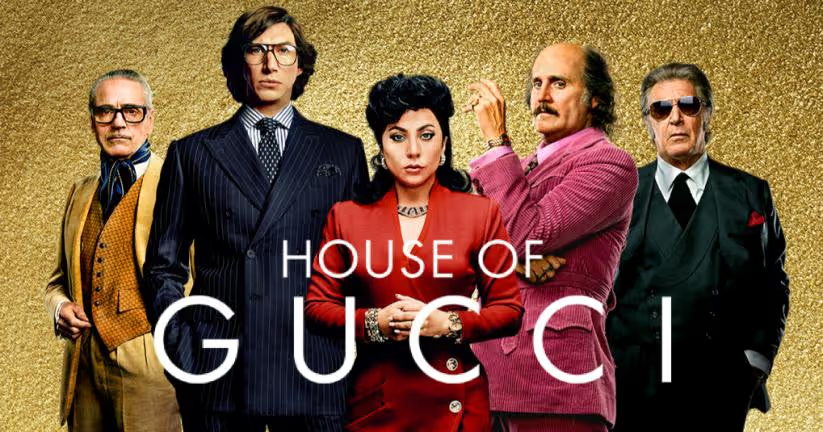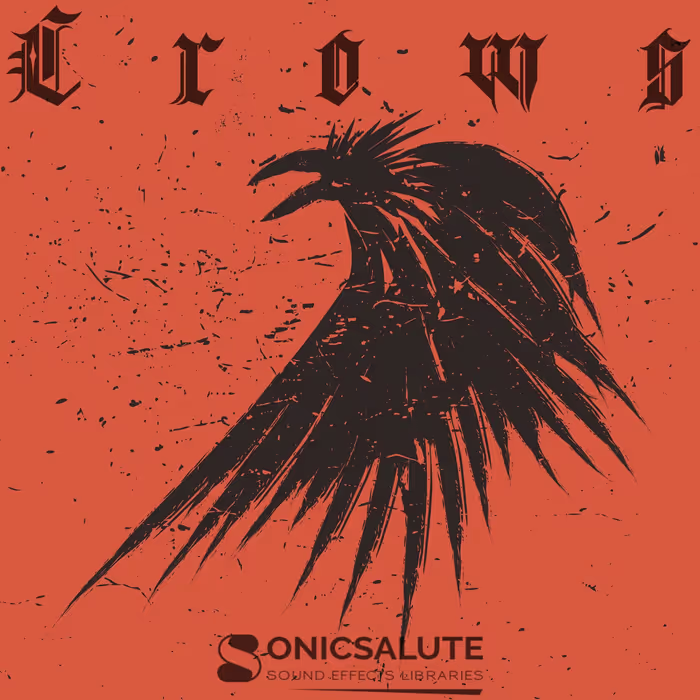James Mather’s sound work makes you believe the movie magic, whether it’s fantastical films like Wonder Woman or Harry Potter, intense action flicks like Mission Impossible, or character-driven biopics like Ridley Scott’s House of Gucci (in theaters now).
In every instance, sound isn’t icing on the cake. It has a baked-in quality that makes you believe what you hear is coming from what’s on screen. Mather — an award-winning supervising sound editor — says that sound should support “everything in a way that you don’t question it. That’s the way sound needs to be; it needs to complement rather than contradict or over power.”
Easier said than done. Seemingly simple soundtracks, like on House of Gucci, require extreme attention to detail because it’s the little things that sell the reality. For instance, in our discussion below, Mather talks about creating crowd footsteps for the streets of Italy, how the streets are cobbled and people wear designer shoes. That creates a particular sound specific to that location. It’s a small detail that makes a big impact on the audience’s experience of the film – whether they’re conscious of it or not.
Here, Mather shares details about the sonic choices for House of Gucci, from defining the streets of Milan and New York City to snowy St. Mortiz, using cats, clocks, and pigeons to emphasize emotion, choosing an anti-heroic sound for the silenced gun used to murder Maurizio, how mixing with a stage full of people refined the final track, and much more!
HOUSE OF GUCCI | Official Trailer | MGM Studios
House of Gucci spans a few decades, from the early days when Patrizia Reggiani first meets Maurizio Gucci to just beyond his murder. How did you use sound to help support that passage of time?
James Mather (JM): The timescale was dictated more by the location changes, which was easier and a more manageable soundscape to identify. They’re in Italy in the early part of their relationship, then in New York, then in St. Moritz, and so on.
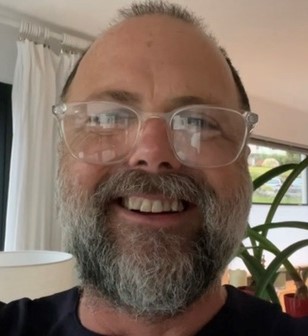
What interested me is the arc of the soundscape and how it changes relative to Patrizia’s experience. When we first meet her she’s driving this feisty car; she skids into a parking space, saunters past the workers, and the music is blaring. The energy is high. Everything is carefree. She goes out clubbing and it’s all upbeat energy. It’s the energy of someone who has nothing to lose.
As the film progresses, the world around her becomes sterile and mausoleum-like; it’s muted. She’s completely in a world that’s out-of-character. It’s not where she’s from. All the fun and flirtatious qualities she has at the beginning — characteristics we love her for because she’s so forward and cheeky — become solitary, embittered, and mistrusting. She gets caught up in this overbearing dynasty.
…all we have to play with is the reverb from footsteps and dialogue. There’s so little compared to the energy at the beginning of the movie
We start with loads of energy and we end up with virtually nothing. It’s almost like all we have to play with is the reverb from footsteps and dialogue. There’s so little compared to the energy at the beginning of the movie.
That was the shape of the film and the soundtrack followed suit, as they wanted. There’s this disproportion of energy, with more upfront to the lack of energy at the end when it becomes really sad. It’s a subtle slide from manic into depressive.
The ambiences and diegetic effects…are simple sound effects. They’re not complex but have to be absolutely correct and fit the moment entirely. They have to be plausible.
It’s a clever portrayal of that decline. Lady Gaga does that in her performance seemingly without knowing. She’s wrapped up in this character and it’s like she’s experiencing this change as opposed to trying to make it come across. You don’t get the feeling of self-pity.
It progressively feels like she’s trying to control her world and if Maurizio can’t control what’s happening then she’ll step in and make it happen. She doesn’t shirk from the battle. The dynamic of their relationship is more complex than the soap opera it appears to be on the surface.
We weren’t trying to tell the story in any other way than the simplest and most realistic as possible. And while it’s a nice change after years of wizards and car chases, it’s quite a discipline.
House of Gucci is one of the more traditional soundtracks that I’ve worked on in a long time because there’s nothing that isn’t ‘real.’ Aside from a few slow-motion camera flashes, there’s nothing that’s unrealistic. The foley has to sound as close to the production as possible to support the dialogue and to help the characters’ additional dialogue feel like there’s a body attached – that it feels grounded. The ambiences and diegetic effects, like door closes, cars by, and church bells, are simple sound effects. They’re not complex but have to be absolutely correct and fit the moment entirely. They have to be plausible. So it’s very much like an old-school film track lay in the style of 70’s and 80’s classics.
When you go onto a dub stage, quite often on a film with a ton of VFX (like action or fantasy movies), you’ve got five or six Pro Tools rigs to play out all the various different elements. We had three on this film including music. We had dialogue, music, and effects. That was it. It was all very self-contained because we didn’t have to put in sounds that didn’t need to be there. We weren’t trying to tell the story in any other way than the simplest and most realistic as possible. And while it’s a nice change after years of wizards and car chases, it’s quite a discipline.
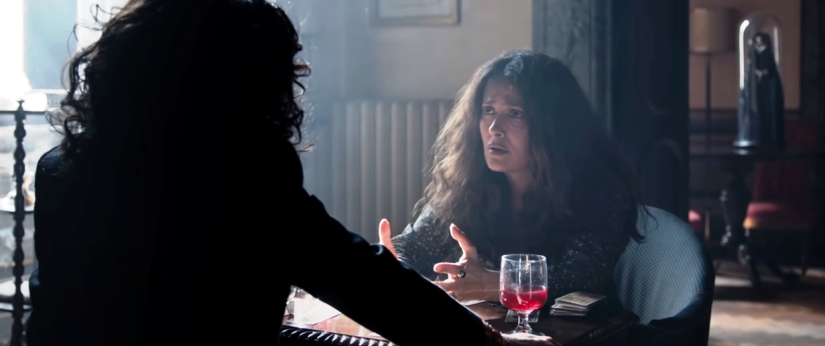
There are so many interesting and varied spaces in this film, from the trucking company to Rodolfo’s estate in Milan to Pina’s apartment…
JM: Apart from the exterior ambience to help locate the scenes we tried out specific notions in places. Pina’s apartment had to sound different. And the question was, “How do we vary that?”
At Aldo’s explosive rage, the pigeons start getting excited outside. They wouldn’t in real life, but it is a small sweetener that helps add to the flurry of rage and emotion.
We used the cats. That idea came from Claire [Simpson, picture editor]. She said, “Let’s make more of the cats!” She was always looking for things we could make more of. It’s lovely to have someone that invested in the soundtrack. Her prompting led to people coming up with great ideas and some daft ideas, but also daft ideas that worked. For example, the pigeons go crazy outside Paolo’s house when Aldo realizes that Paolo sold his shares of Gucci.
That’s one of my favorite scenes when Aldo (Al Pacino) is raging because he can’t believe what Paolo has done. At Aldo’s explosive rage, the pigeons start getting excited outside. They wouldn’t in real life, but it is a small sweetener that helps add to the flurry of rage and emotion.
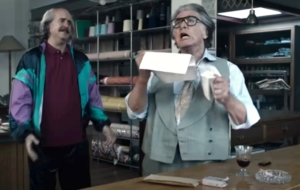
Similarly, the cats in Pina’s apartment get more unfriendly as Patrizia’s life gets more tumultuous.
Equally, the use of large hearth fires to fill locations with warmth and energy was a favorite too, as were clock chimes and the slow tick tock of Rodolfo’s ‘mausoleum’ like house.
[tweet_box]Sound Supervisor James Mather on the Refined Sound of Ridley Scott’s ‘House of Gucci'[/tweet_box]
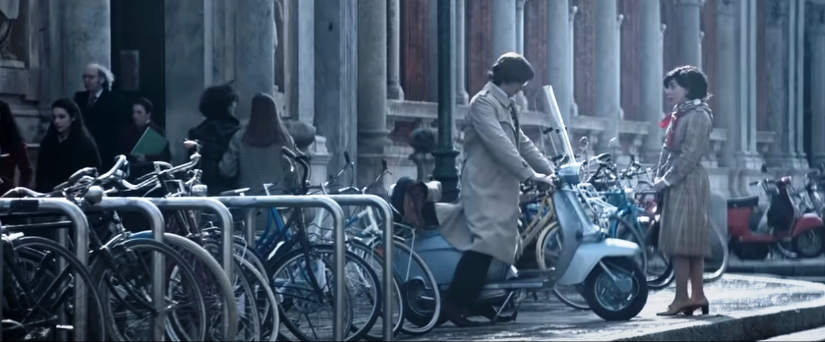
In the film, the sound of Italy in the early ’70s is full of Vespas. It reminded me of Eddie Izzard’s comment in his standup show Dressed to Kill. He jokes that “most Italian people are always on scooters, going, “Ciao.” And the scooters really are a distinctive sound for Italy in House of Gucci. You certainly don’t hear them in New York City…
JM: It’s that cliché. It’s that kind of instant recognition.
Being the sound nerds that we are, we looked into the difference between the modern-day Gillera scooters and the Lambretta and Vespa styles that were in the ’60s. They were quite different so we made an effort to make sure we had the old-school-sounding scooters, which are much more rattley and less whiney. They sound more like they’re about to fall apart and less like a high-pitched exhaust system.
So we went with those, as we did with the horns and motors on the Fiat 500s and the other cars.
…we had the old-school-sounding scooters, which are much more rattley and less whiney. They sound more like they’re about to fall apart and less like a high-pitched exhaust system.
Along with horns (of which Italy has many!), church bells were a really big deal too because this is the center of the Catholic faith and therefore a big sound character of the location. We wanted to get that in as much as possible but it proved challenging when there’s music. There is a lot of needle-drop music in this film through many sections, which Harry Gregson-Williams’ score weaves delicately and carefully through. We didn’t want the bells to sound like part of the score; it had to be its own thing.
Often it’s a case of making the effects blend with music so they aren’t out of key. But in this instance, we had to find bells that didn’t sound too musical, and that had more clank than clang. That was challenging.
Many Italian streets are cobbled and everyone wears really nice designer shoes. So the footsteps on the streets outside…were tough.
The footsteps were challenging too, funnily enough. Many Italian streets are cobbled and everyone wears really nice designer shoes. So the footsteps on the streets outside – to give you the sense of activity and bustle – were tough. For instance, when Patrizia and Maurizio go on their first date, there are quite a few different locations they go to before they end up in the boat in the river, and it was interesting to see how the variety of crowd feet gave us the sense of that vibrancy that you get in Italy, where so many people walk. It also had to be classy.
That was the big shift that also helped us to define the differences in culture and locations.
When you go to New York, no one is walking. There are the paparazzi outside the Gucci store for Sophia Loren. But it’s the sound of traffic; the sound of footsteps was almost not there. That was the big shift that also helped us to define the differences in culture and locations.
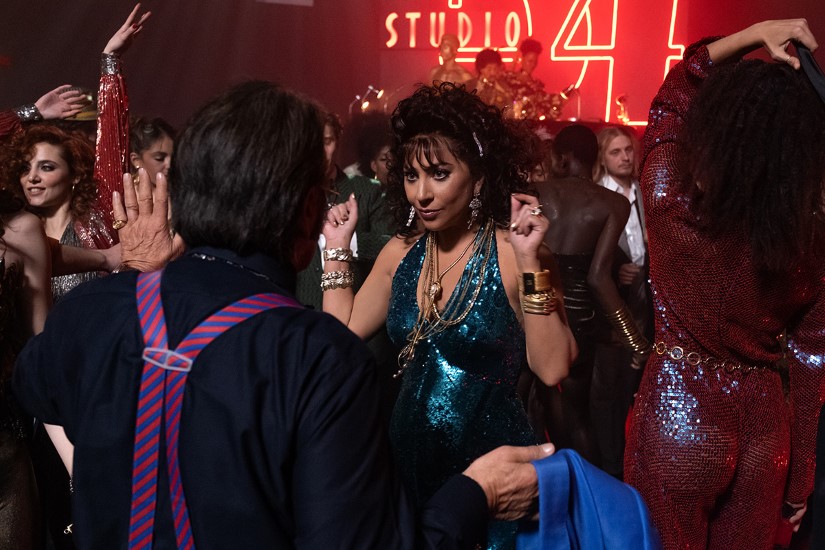
The loop group for the backgrounds in Italy also helped to put you there…
JM: Our dialogue editor Rob Killick spent a lot of time on that. We recorded Italian accented American speakers, and Italian language speakers. We also had non-accented American or English depending on where we were. It helped to choose between them to define the context of what we were trying to say with the story. There were occasional bits of English spoken that just helped with a bit of narrative clarity in places.
It helped to choose between them to define the context of what we were trying to say with the story.
Ultimately, we did about four different group sessions. And in dealing with COVID, we had to do the four different groups in three different sittings because we couldn’t have more than six people in a room miked up.
For the first loop group we recorded, we had a facility with several unoccupied cutting rooms that we could use as places to record the group in isolation. Each room had a mic set up and the actors had headphones so they were all listening to each other but were in complete isolation.
…they are listening to each other and so are performing against the energy of the group, we had absolute control over each individual actor. We were able to therefore create the texture that we wanted.
It’s a very extravagant way to shoot loop group. But it’s amazing because they are listening to each other and so are performing against the energy of the group, but we had absolute control over each individual actor. We were able to therefore create the texture that we wanted.
Loop groups are wonderful but it’s like chicks in a nest: they’re all chirping for a bit more food. There is always one or two that pop out and you wish you could adjust it a bit. But shooting it this way was the best. We all sat there going, “God, wouldn’t it be great if we could do it like this all the time?”
We were lucky to get them all into the facility together and still keep them separated, and we could record in short stints.
We’d record extra bits and pieces that we weren’t sure we’d need, things like the TV commercials…
There were lots of ideas being put forward for alternatives and coverage. We’d record extra bits and pieces that we weren’t sure we’d need, things like the TV commercials for when Patrizia is eating gelato and she sees Pina on the television.
There’s an earlier scene with Patrizia and her mom in the kitchen (after the nightclub scene) and we didn’t have anything to make that feel like it was a close neighborhood complex, so we recorded an Italian talk show with a couple of Italian actors. We futzed it and came up with something that sounded like it was a radio show from another nearby house. That helped to flavor the locations a bit more.
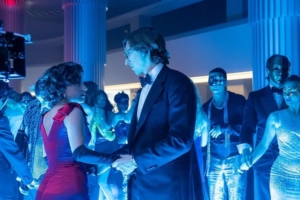
The nightclub crowds were really good fun. Ridley insisted they have music playback in the nightclub scene so the actors were talking against music. This ensured that the cast had to project their voices. It meant that we got the most fantastic performances but it also meant that when Claire was cutting it there was no way of keeping the music in sync. We didn’t want to be stuck with a particular shot or take because of the background music.
Re-recording mixer Paul Massey is a genius at dialogue mixing. Between him and Rob [Killick, dialogue editor], they managed to eliminate a huge amount of the background music using filters.
When we added the crowds in, it added the energy that the playback music was giving the actors and it felt like they were part of a room full of people making a lot of noise.
When we added the crowds in, it added the energy that the playback music was giving the actors and it felt like they were part of a room full of people making a lot of noise. With that in place, and with the thumping music overdub, you can’t hear any remnants of playback music running under the dialogue and the performance of Adam Driver and Lady Gaga are intact.
That scene was our first task. They wanted to know how much we could clean it up because they didn’t want to get the actors in to do ADR for fear of not getting as natural a performance.
Jared Leto couldn’t do ADR on this film because he had too many other commitments, so instead he took the sound recordist to the hotel and re-recorded all his lines from the script in the hotel room so that we had a clean version of all his dialogue. He said we could use whatever we wanted: a bit of it, all of it, just the consonants, just the vowels. He clearly knows what he’s doing because this tool-box of ADR worked really well.
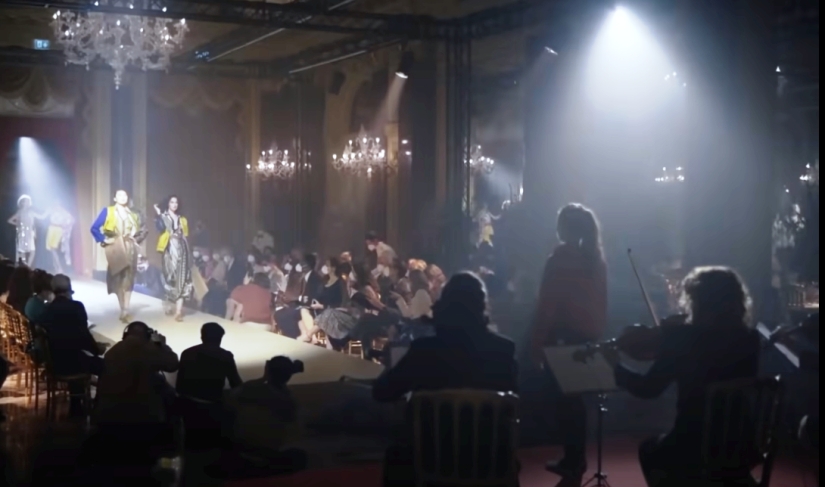
Paolo’s wife Jenny is singing opera during Paolo’s Gucci runway show. Was that her real performance?
JM: Yes! She’s an English actor, a theatrical actress mainly. We didn’t do ADR with her and so I didn’t meet her, but Ridley loved her. She sang that opera on set. And it’s great because I don’t know how we would have done it otherwise. The digression of her performance as everyone leaves the show and things are falling apart is something that could only happen in situ. The delicacy of her note ability is brilliant. It’s totally real.
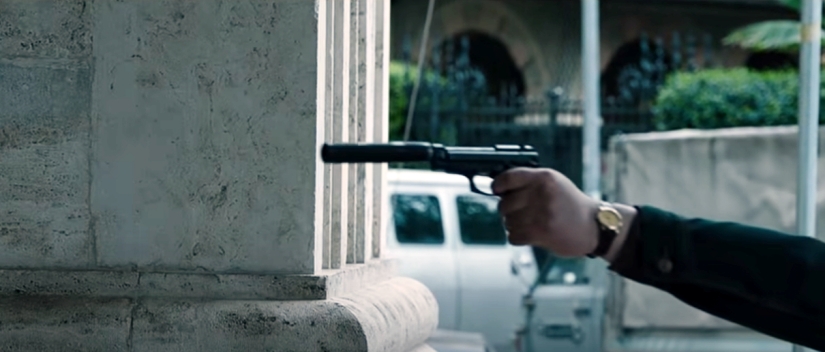
Can you talk about your sonic choice for the sound of the gun that kills Maurizio Gucci? That could have been big and powerful because that’s an epic moment! So what was your guiding light there for how that silenced gun should sound?
JM: It’s interesting because there were definitely flavors the filmmakers had in mind when they were doing the cut. Silenced guns, in every film where they’re used, are always a bone of contention. Director Chris McQuarrie knows more about guns than any director I’ve worked with and he’s always very particular about the gun sounds we’ve used on Mission Impossible, especially for a silenced gun.
Silenced guns, in every film where they’re used, are always a bone of contention.
Quite often we use a lot of foley effects to create it rather than trying to mute a gunshot. There’s a trick you can do, that is to put your thumb over the hole of a bicycle pump and as you push the air out and release your thumb, there is this punch sound of air escaping. It’s very staccato and aggressive. It’s a lovely element in a silencer because it gives you that punch of air you see coming from the muzzle. But you need to have the gun effects as well. It gets built up into making that moment.
In the same way that we found the right sounds for doors and scooters, it was the same thing for the gun. We went for the sound that everybody recognizes as being a silenced gun. It has a high-end phew but it’s not too big and aggressive.
We went for the sound that everybody recognizes as being a silenced gun. It has a high-end phew but it’s not too big and aggressive.
It’s weird because a single gunshot is often one of the most subjective sounds. Everyone has an idea of what a silenced gun should be like. For some people it’s loud, for some it’s not there/very muffled. In this instance, our crew felt like it should be the sound you hear in a James Bond movie. That sound! It’s “silencer #42,” but quieter than usual.
That gunshot was another example of the subjective taste that filmmakers have for their storyline and what they feel is relevant. It was premeditative violence, but it’s so prosaic and so real and it wasn’t glorified. It wasn’t a sound that an action movie would have. It’s the sound of this old guy who was paid a lot of money to show up and shoot Maurizio and then drive off in this car that doesn’t look strong enough to carry him away from this murder scene fast enough.
Again, there is this sense of reality about it. It works because it’s ugly, and sad, and painful, and uncomfortable. It’s anti-heroic.
Again, there is this sense of reality about it. It works because it’s ugly, and sad, and painful, and uncomfortable. It’s anti-heroic. It’s so clever to hold back from going too far or too crazy. There are no yells or shouts. There is the doorman charging down the steps to tackle the shooter but he soon retreats. You don’t have Maurizio doing anything too dramatic or blood-curdling. It was a bit of a surprise, and shock. And that’s how the audience should feel, like “What?!” even though we’ve seen the meeting with Patrizia and we know what she wants to do.
Those balances are really fine, and they are the things that I’ve missed the most in terms of working on a dub stage without the filmmakers. When you’re doing the mix with a small crew and no one else can be there because of COVID isolation, these decisions don’t get the time or the input that they need. But we had everyone on the stage — music editor, picture editor, Ridley, a full sound team, and the mixers — and that meant that everything had a good discussion point. We could listen to it, share our ideas, make changes, agree on something and move on. It took so long to arrive there when we didn’t have everyone together.
One of the nicest things about making this film was that we could all be in the room.
One of the nicest things about making this film was that we could all be in the room. We did Belfast with Ken [Branagh, director] and he was in the room the whole time. But it was the smallest team you could possibly imagine with the highest level of health screening available. But the mix on House of Gucci felt like a mix you’d have done two years ago with everyone there.
I think House of Gucci is a really confident mix. It doesn’t feel like it’s lacking in any way and it doesn’t feel like it’s trying too hard. It’s supporting everything in a way that you don’t question it. That’s the way sound needs to be; it needs to complement rather than contradict or over power. Maybe mixing in masks is the future!!!
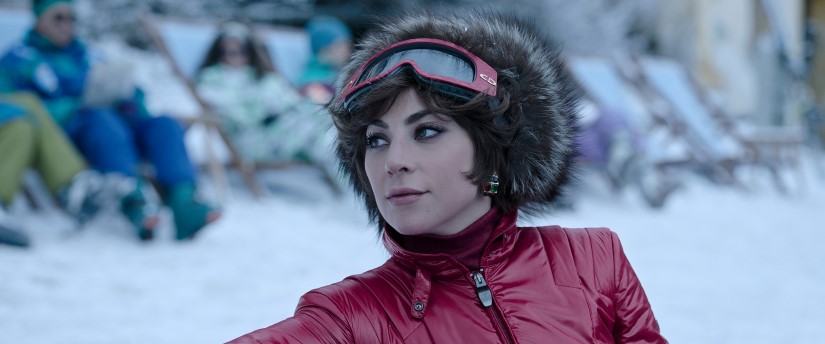
What was the most challenging scene for sound in House of Gucci?
JM: Possibly the meeting in the hotel room, when Paolo and Aldo meet with Nemir Kirdar, the Iraqi businessman. That was tricky only because you have TV commentary going on that has to make sense to the world that speaks Italian and it didn’t make sense. It was the wrong commentary and we had to work hard to get that right. And it’s a sound that’s not really part of the scene; it’s just wallpaper.
Every location had its own challenge, like how do you make St. Moritz feel vibrant and lively — this Alpine resort full of people skiing that you don’t see, or the sound of people walking past with their skis.
This was my first collaboration with Claire and Ridley, and I didn’t know how much they’d want us to add to build the locations that we were in. So, much of Italy do they want to hear? How much of St. Moritz do they want to hear? How much of the pigeons or the cats should there be?
This was my first collaboration with Claire and Ridley, and I didn’t know how much they’d want us to add to build the locations that we were in.
We didn’t meet until we got to the dub stage at the end, so we never sat down and watched the film together and talked about it. We never discussed what to do, how this should be or that should be. I wasn’t that familiar with their style or their ambition for style in this film. We talked about bits and pieces but it was one of those where, until you hear it, you don’t really know how much more you want or if something is too much.
The first week or so was a steep curve for us in terms of understanding what their preferences would be. Their flavors were quite rich and strong. They like things to have a lot of animation to them in the soundtrack. We erred on the slightly subdued side, not quite so clamoring. So that was interesting. That’s part of the process of getting to work with people and understanding their different versions of what they hear in their heads. Had we spent time together as we normally would, we’d have gotten there long before we got onto the dub stage.
We had the same sentiment and the same appreciation but we just weren’t sure how much to put in.
It wasn’t a problem, don’t get me wrong. But there was a realization that we needed to turn it up another few degrees. It wasn’t a different idea; it was the same idea but it just needed more adrenaline. Overall, gauging their flavor was quite tricky for me and the team. But once we got there, it was easy because the flavor was the same all the way through. We had the same sentiment and the same appreciation but we just weren’t sure how much to put in. With some people, you put a fireplace in and you have a roaring fire, and they say no, the fire is way too big. In this instance, it was about making the fire bigger.
It’s just the question of how much do you turn the dial. And that’s an important part of collaboration. It’s a very important part of what we do, and how we do this work. All these things we’ve taken for granted for so long, we now have to reassess them. We have to think about what questions to ask about how much of something they want or how intense something should sound. Working remotely, there isn’t always time to go through 50 different versions with them. When you’re sitting in a room together, you ask: “Like this?” And they respond. It’s done.
It’s just the question of how much do you turn the dial. And that’s an important part of collaboration.
I don’t particularly like the sizzle sound of cigarettes when people smoke, but some people love them. It’s a style question. It always feels like you’re playing catch up if those things aren’t there the first day they hear something back. But that’s part of the new relationship. Many people don’t know what they want until they hear it. Or they hear what they don’t want and we work it out. Throughout the pandemic, it has been proven time and again that the filmmaking process is a collaboration and not a series of translations and guesses.
There are many quiet places in the film, very austere house interiors, and so some of the dialogue was the hardest part. Paul [Massey] worked really hard on those.
Also, the music ins and outs were tough. When you have so much source music, it’s a very careful balance to make sure we’re not just turning the energy on and off. Those tracks have an inherent familiarity; everyone knows of them. But they also play for a set period of time in the film; they start and stop. You don’t want music to be too in and out. You want it to feel like it’s helping to bridge locations or bringing character to people’s performances. That was tough to make sure it all felt like it was part of the fabric, the quilt, and that it wasn’t just added on top. Harry’s music added a lovely touch of intimacy to the piece and sat within the soundscape beautifully.
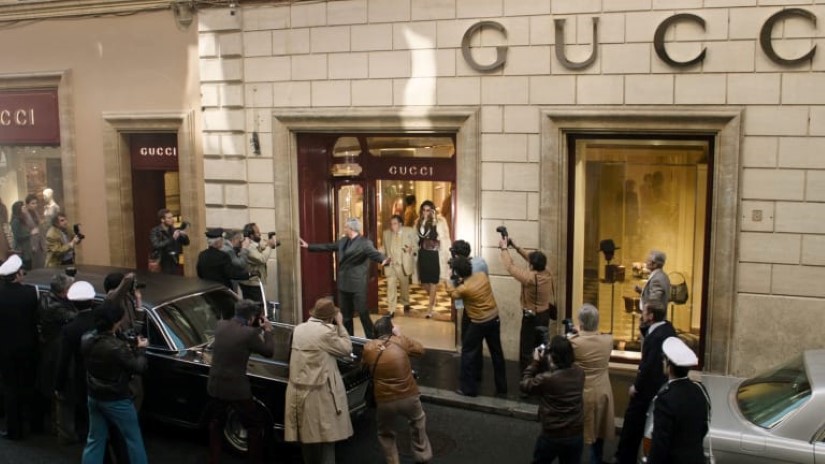
What are you most proud of in terms of sound on House of Gucci? What stands out as awesome or unique about the sound of this film?
JM: I would say the crowd work. We ended up doing a lot of it ourselves. For instance, when they’re all wolf-whistling at Patrizia, that was us on the dub stage. It was pretty much live to picture. We had quite a lot of fun just throwing things in as we were going through the mix. It was a bit like playing a musical instrument. There’d be places where we didn’t need a word, but just a pitch or shout that works for a specific moment, like a guy on the street or a person doing something over there. Or, at night time when they’re having a fight and Patrizia goes to see him and they argue. You want something in the background. So, even though we recorded all that crowd, we still went through and peppered it with our own little voices doing stuff on the stage. It was great. We did it and no one will ever notice it but it’s the stuff that makes you believe that this is a natural location and setting and what you hear would be there.
We did it and no one will ever notice it but it’s the stuff that makes you believe that this is a natural location and setting and what you hear would be there.
I do love the café moment. I love the opening when Maurizio is outside at the café and then at the end of the film we go right back to that after going through this whole arc of the story. When we go back to that at the end, it’s the same. And we were very careful to make sure the foley of the cigarette and the coffee cup and the money in the tray and the cycle clips on his ankles, and all the bits and pieces are absolutely the same. We brought it right to that at the end and it wasn’t heightened. We heard so much over the past two hours and we could get away with playing it bigger, but instead, it has the same sensibility. I like the fact that we didn’t over-flavor the stew; we got it just right.
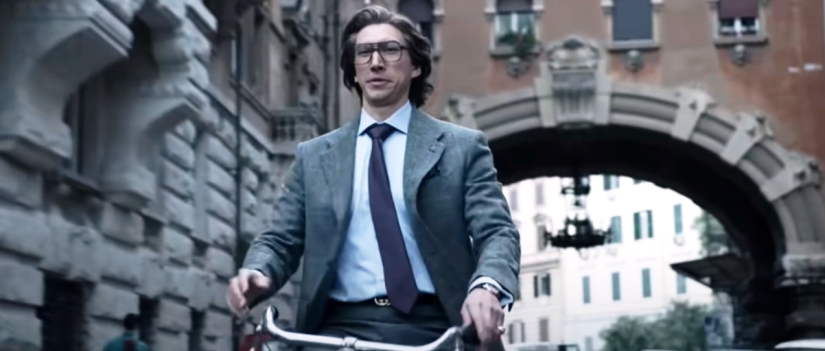
I love that it’s the same! Despite so much that has happened in Maurizio’s life, some things just stay the same…
JM: Yes! And with his smile, the first time you see it in the opening you don’t know why he’s smiling, or who he is, or what’s happening. But the second time you see him smile, you’re kind of let into his mindset. Maybe he’s chuffed at the offer they’re making him. Or, maybe he’s just happy and being himself. But there’s more known about his character now. You’re invested in him; you understand him. And we can put whatever into that enigmatic smile. But we have a whole story that goes with it. That’s the artistry of Claire’s editing and Ridley’s directing and how they put the film together.
A big thanks to James Mather for giving us a behind-the-scenes look at the sound of House of Gucci and to Jennifer Walden for the interview!

